
Hydropower is a mainstay of China’s green energy scheme, helping in their bid to cut down on harmful emissions and their move towards cleaner fuel alternatives.
As the top global creator of hydroelectricity, China leans heavily on its extensive collection of dams and water reserves in places such as Yunnan and Sichuan. The powerplants serve up a slice of the country’s electrical needs while also assisting with the management of water sources and flood control.
Over recent years, areas including Yunnan have seen drastic reductions in rainfall. With considerably less rainwater, China has been witnessing historic lows in reservoir levels, which has decimated the harnessing power potential of this once reliable source of energy.
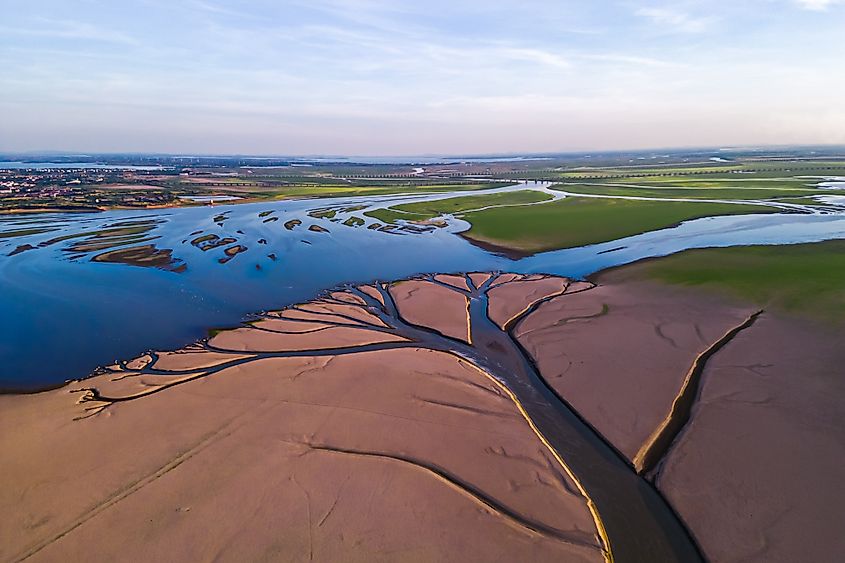
These extended droughts are not only causing energy problems; they also disrupt China’s ecosystem balance. It is like a domino effect. The lack of energy helps create instability in the country’s interconnected infrastructure. This leads to fluctuating usage guidelines and the implementation of emergency measures, particularly affecting high-intensity production sectors, which are forced to halt normal operations.
Dwindling water resources from sources such as large hydroelectric turbines threaten China’s already strained economic stability. All of this highlights how drought, even when it happens at a regional level, can impact an entire nation. It also shows why diverse and flexible energy strategies are needed if water levels continue to plummet.
Background on Hydropower in China
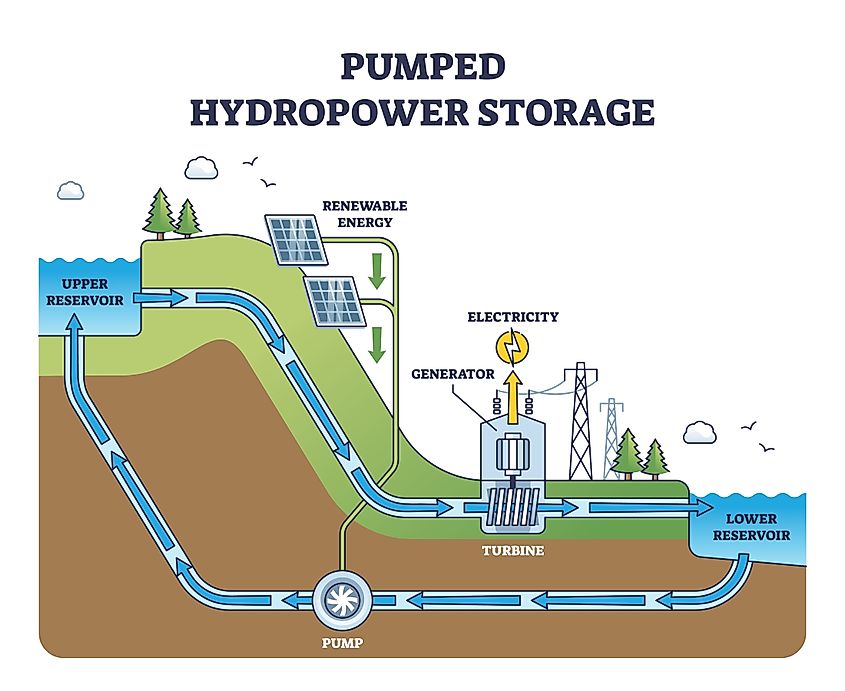
China harnesses the power of many of its rivers, extensively using hydropower infrastructure as a key component of its energy strategy. For years now, this strategy has evolved and grown, with important plants found within provinces such as Yunnan and Sichuan, where geography is advantageous and water conditions are ideal.
Key Hydropower Projects
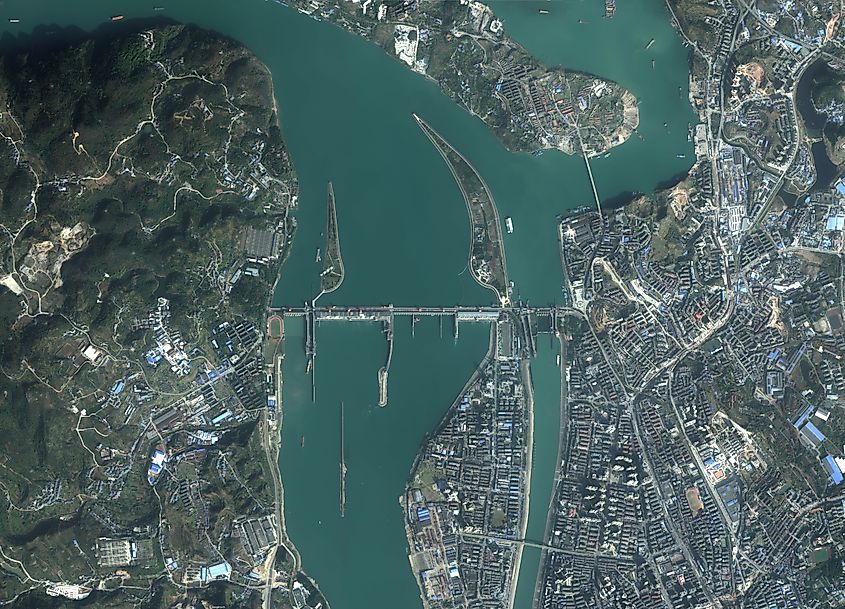
Among the key hydropower projects in China is the extraordinary structure called the Three Gorges Dam. Resting on the Yangtze River inside the Hubei province, it stakes claim as the world’s largest hydropower plant by installed capacity – a remarkable creation capable of spewing out 22.5 gigawatts (GW) worth of electrical current.
Another monumental endeavor is the Baihetan Dam, which sits on the Jinsha River (Yangtze’s contributor), straddling the borders of the Yunnan and Sichuan provinces. Packed with a force of 16 GW, Baihetan is the second most productive hydropower plant worldwide.
Those big projects are more than just eye candy; they are critical cogs in China’s plan to wring power from its rivers and streams. This method lessens their dependency on fossil fuels like coal and curbs the release of harmful gases.
Historical Development and Expansion
China started to focus on hydropower back in the 1950s, which led to projects like the Gezhouba Dam in Hubei province, which began construction in 1970 and was completed in 1988. Then, during the 80s and 90s, they made further progress, building the Ertan Dam in Sichuan in 1999.
Since that time, Beijing has bumped up investments to boost its abilities, particularly in the regions found to the southwest. Rivers like the Yangtze, Mekong, and Salween run through these areas creating a lot of chances for making use of water routes.
The blueprint also sketches out prospects from another visionary project called “West-to-East Power Transmission.” This project aims to supply electricity generated in the resource-rich western regions to the energy-deficient eastern areas.
Current Challenges
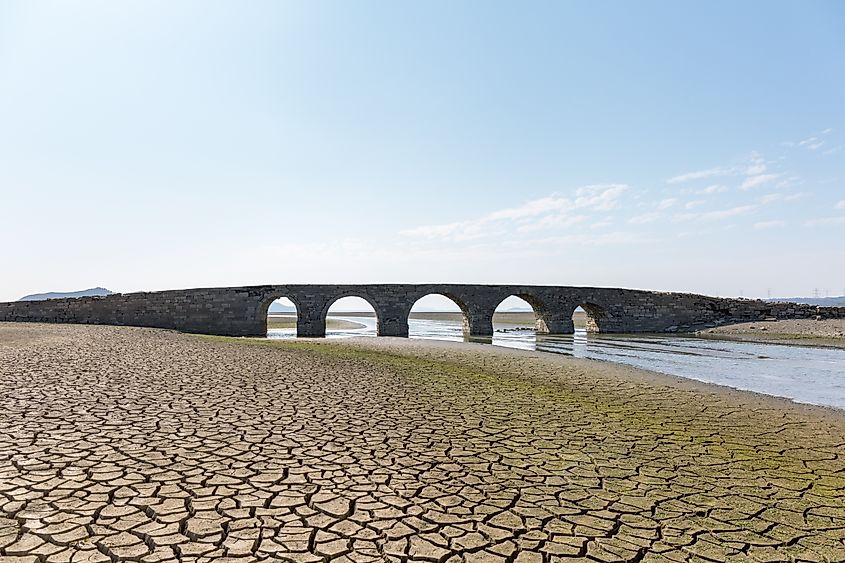
Lately, long-lasting dry spells in China have caused water storage levels to drop, leading to effects on the creation of electricity.
In 2023, Yunnan faced a major dry spell. This cut down their hydropower production, and China had to use more coal and other old-school fuels for energy needs. Even with these bumps in the road, hydropower is still important for China’s goal of using cleaner energy.
Ongoing investments in large-scale projects like Baihetan, as well as initiatives to improve water management and integrate other renewable energy sources, emphasize the importance of achieving China’s long-term environmental and energy objectives.
China gave everyone a peek into their plans on October 24, 2021, taking on the task of handling carbon emissions. They set two main goals for themselves. The first one was about in regards to hitting peak levels of carbon emissions by 2030. The second goal is even more ambitious – they want to become carbon neutral by the year 2060.
But things are not always straightforward. Last year, China dealt with a lack of rain, leading to dry, arid conditions. This, in turn, had a big impact on their production of hydroelectric power, especially in the regions of Yunnan and Sichuan.
Drought Impact on Yunnan and Sichuan
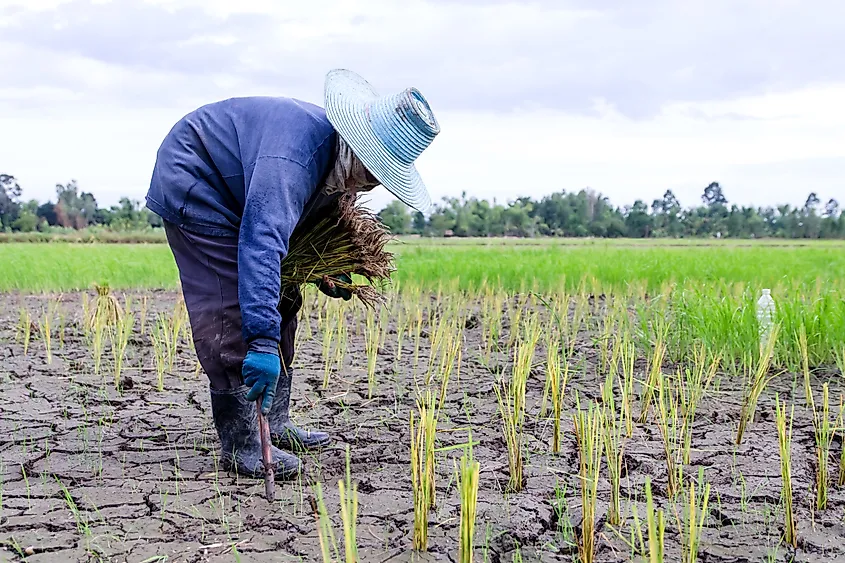
In Yunnan, China, rainfall has significantly decreased recently. The International Renewable Energy Agency (IRENA), a group that watches over worldwide climate patterns, reported that from January to April 2023, the region only got about three-fifths of its usual rain.
The China Daily noted that Kunming, Yunnan’s capital, saw a drop to just one-tenth of its regular rainfall at the start of 2023. Due to the reduced rainfall, the lakes used for water storage were comparatively bare. These bodies of water are crucial for generating electricity through hydropower.
As a result, this region only managed to generate half of its usual power amounts with this technique. At the same time, in Sichuan province, nearly 80 percent of electricity comes from hydropower. But harsh dry spells have played havoc with local hydropower making. In Sichuan, less water led to a drop of almost a quarter in created hydropower in May 2023 compared to the year prior.
Ember, an independent energy and climate organization, says reduced rainfall and subsequent low water levels in reservoirs have posed significant challenges for Sichuan’s hydropower sector, affecting the overall electricity supply during peak demand periods. The drought and high temperatures in both provinces have forced the local governments to increase reliance on coal and gas power plants, raising concerns about environmental impact and carbon emissions.
In such an interconnected time, it’s not difficult to see how the drought-localized regions can spill over to other areas. The droughts in Yunnan and Sichuan have not only affected local consumption but also disrupted electricity exports to other regions.
Yunnan, for example, exports a significant portion of its hydropower to Guangdong, which consumed 787 billion kilowatt-hours of electricity in 2022, with 23 percent of that power coming from other provinces, primarily Yunnan. Without the usually available amount of hydropower, it is only natural for people to turn to other methods, like coal. This has created big implications for energy security and industrial operations in these provinces and beyond.
Impact on Hydropower Production
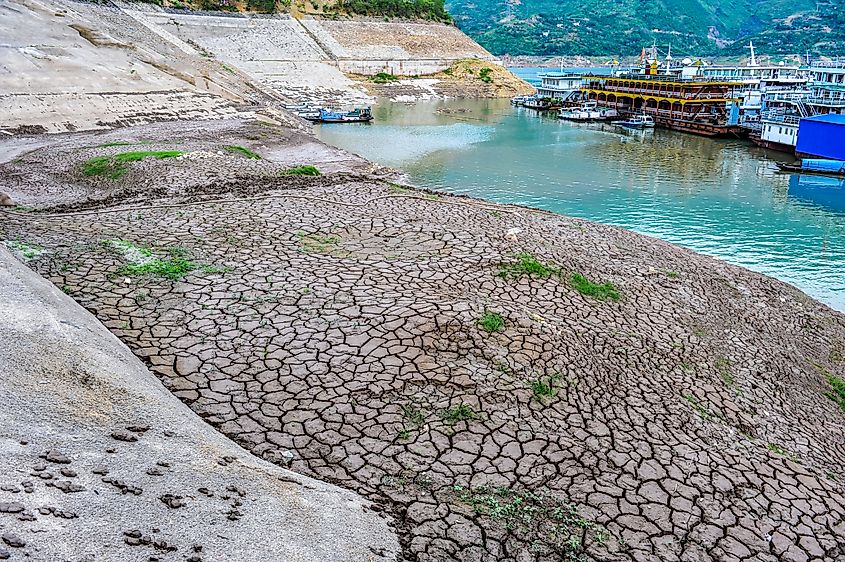
The prolonged drought led to significant reductions in hydropower output, with numerous reports detailing the specific impacts and figures. As per Phys.org, the world’s hydropower creation dipped dramatically during the first half of 2023. That worldwide dip points back to China. In fact, almost three-fourths of this worldwide drop was courtesy of China’s stricken dry spell.
The drought followed a surprisingly low amount of rain. Yunnan experienced nearly 45 percent less rainfall than usual, leading to historically low lake levels and a reduction of up to 40 percent in hydropower production compared to last year.
Similarly, Sichuan faced a severe drought, with river inflows into large lakes dropping up to 40 percent below the ten-year average, resulting in a 20 percent decrease in hydropower generation over the same period.
Big power plants like the Three Gorges Dam ran into serious problems because of this. The dam’s ability to generate energy dropped by about one-third with the lower water levels in the Yangtze River Basin.
China has been pushed to rely more on fossil fuels to compensate for the energy deficits, highlighting larger issues related to energy security. It also underscores the immediate need for diversification and resilience in energy planning in China and all over the world.
Energy Challenges and Consequences
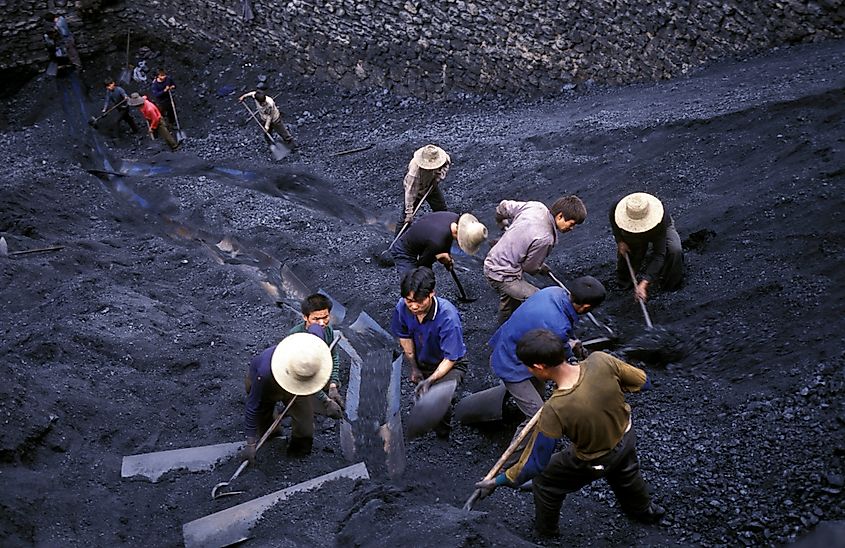
When their hydropower production fell, China turned to coal and other fossil fuel types to fulfill their need for power. The International Energy Agency (IEA) says that China’s use of coal rose by 4.4 percent in 2023. The growing use of old energy sources like coal and oil is making it challenging for China to reach its eco-friendly goals.
According to Carbon Brief, in 2023, China’s release of emissions grew 5.2 percent with more coal and oil usage. From 2020 to 2023, Carbon Brief says that China’s output of these damaging air waste elements increased by around 12 percent.
As well, with less energy being created, it forced authorities to ration electricity. This caused some factories to close down temporarily in areas like Sichuan. Major companies from around the globe like Tesla, Toyota, and Intel have felt the effects of this problem. These interruptions cause issues throughout their production process because items that one part relies on aren’t available when needed. The end result? Financial strain and uncertainty.
Moreover, the economic strain from these energy challenges is evident in the slowdown of industrial output. Areas that rely on hydropower are seeing a noticeable drop in activities. The aluminum industry was especially hard hit, with production down by as much as 30 percent. This reduction is impacting markets both locally and globally.
While the country is accelerating the deployment of renewable energy, such as solar and wind, the current reliance on coal during hydropower shortfalls demonstrates the vulnerability of its energy infrastructure.
Technological and Strategic Responses
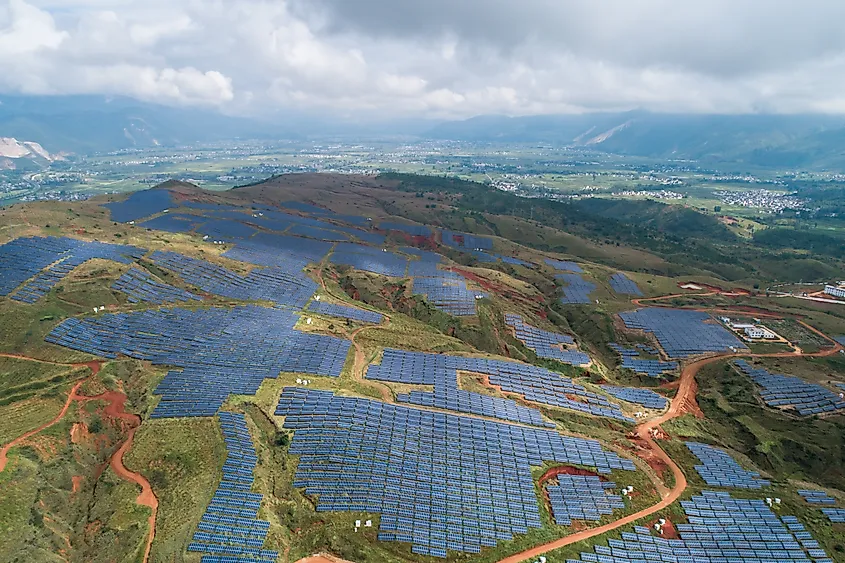
In response to the drought conditions affecting hydropower production, China has implemented various technological and strategic measures to mitigate the impact. One key approach has been innovations in water management techniques. Water-saving ideas like advanced watering systems and improved ways to manage water storage areas are helping the situation.
One specific example of China’s innovation in water management to mitigate the impact of drought on hydropower production is the implementation of the “Sponge City” initiative. This approach involves creating urban areas that can absorb and store rainwater to reduce runoff and improve water availability during dry periods. Techniques used in Sponge Cities include permeable pavements, green roofs, rain gardens, and enhanced water storage systems.
According to the writers of the paper “Sponge City Construction in China: A Survey of the Challenges and Opportunities” while the initial 30-location pilot program has benefits still has some issues to iron out. They say it still lacks a strong research basis and suffers from inappropriate strategies and unavailable green products and materials. Despite that, they consider it to have strong potential.
Not only that, but China is also putting money into making smart water networks a reality. These networks make use of data analysis to look after their water resources in the best possible way. For instance, China’s national water network plans include the application of intelligent technologies in water management to address issues like regional water scarcity and the efficient allocation of water resources.
China is also significantly expanding its renewable energy capacity to compensate for the shortfall in hydropower. The nation is pouring resources into projects using solar and wind power. The International Energy Agency (IEA) says China is one of the top countries in the world for solar and wind power capture. In 2023, China made it possible to capture more energy – enough from 100 GW worth of sunlight power setups and 50 GW from wind sources.
Government leadership also gives incentives like financial help for solar and wind energy sites, as well as tax breaks for companies focusing on renewable sources. The development of large-scale battery storage systems and pumped storage hydropower facilities are crucial components of this strategy.
They are also building powerful electric lines, known as HVDC transmission lines, that will carry electricity from places in the northwest with a lot of renewable energy to areas in the east and south where people need it. This helps keep electricity supply and demand steady while also lessening the need for coal power plants when there isn’t enough hydropower.
As well they are working to mix up their power sources and plan to put money into new water control tools and grow their eco-friendly energy abilities. This way, China hopes to lessen the effect of dry periods on its electrical power from water plants and keep solid, earth-friendly energy going for many years ahead.
Long-term Implications of Recurring Droughts
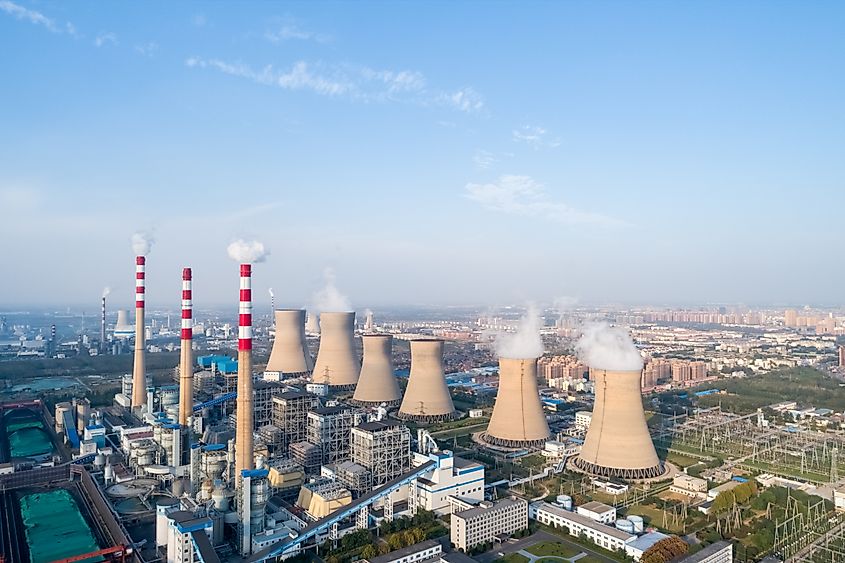
If current drought patterns continue, China’s green energy goals could be in danger. How bad are these dry periods going to be? If we go by what climate forecasts predict, China will face big hurdles in keeping its hydropower output running smoothly as droughts start to happen more often.
The predictions show that places like the Yangtze River Basin, which is key to creating power through water, will see less water moving through. And, of course, less water means less power created.
To fix these issues, China is trying to hurry up its use of more eco-friendly power sources like solar and wind. The authorities in China have already aimed high with plans to increase their green energy usage. This is part of a bigger plan to ensure no excess carbon is released into the air by 2060.
Also, fresh ideas for saving energy like big battery arrangements and water storage systems are being pushed to the front of the queue. This is all to make sure we always have a steady supply of power.
They are also exploring technologies such as hydrogen energy and advanced nuclear power to diversify their energy portfolio further.
According to the ChinaPower article “How Is China’s Energy Footprint Changing?” China is third in the world in terms of power generated through nuclear plants. So clearly, it is a strong option for them going forward with keeping down emissions and dealing with future drought situations.
These steps are crucial if they want any chance at lessening the hit from long-haul climate shifts on China’s platforms pumping out their required energy.
In Conclusion
China’s strategy for green energy is strongly reliant on its use of hydropower. Yet, changing weather patterns with climate change are making it tough to count on this type of energy all the time. Droughts have become more common and have recently hit places like Yunnan and Sichuan, where they rely heavily on hydropower. Without enough rain, these areas cannot make as much electricity, which has caused China to turn to the use of fossil fuels.
These droughts not only disrupt electricity production but are also making it harder for China’s plans for healthier economic growth while focusing on green energy.
So, what is China doing about it? They are finding ways to manage their water resources, producing more energy from solar and wind, storing extra energy efficiently, and transferring it smoothly across different regions when needed – leaving no stone unturned.
China has set its sights high with goals of capping carbon emissions by 2030 and reaching a balance by 2060. To reach these targets under an uncertain climate future demands smart policies adaptable enough for whatever comes their way.
While recent droughts have burdened China’s energy production, the future shines bright with the promise of increased resilience through innovation, renewable energy expansion, and smart policies that adapt to whatever challenges lie ahead.
Works Cited
Britannica. “Three Gorges Dam | Facts, Construction, Benefits, & Problems.” *Encyclopædia Britannica*, 25 Feb. 2019, www.britannica.com/topic/Three-Gorges-Dam.
Bickers, Robert, editor. *The Oxford History of Modern China*. Oxford University Press, 2022.
Boxer, Baruch. “China’s Three Gorges Dam: Questions and Prospects.” *The China Quarterly*, no. 113, 1988, pp. 94-108. JSTOR, https://www.jstor.org/stable/654267.
“Baihetan Hydropower Project, China.” *Www.power-Technology.com*, www.power-technology.com/projects/baihetan-hydropower-project-china/.
China and Its Massive Coal Consumption – Fact Check – *Climate Fact Checks*. 25 July 2023, climatefactchecks.org/china-and-its-massive-coal-consumption-fact-check/.
“China Maps Path to Carbon Peak, Neutrality under New Development Philosophy.” *English.www.gov.cn*, english.www.gov.cn/policies/latestreleases/202110/24/content_WS61755fe9c6d0df57f98e3bed.html.
ChinaPower. “How Is China’s Energy Footprint Changing?” *ChinaPower Project*, 13 Aug. 2018, chinapower.csis.org/energy-footprint/.
“China’s Worst Heatwave in 60 Years Is Forcing Factories to Close.” *Citizen Digital*, 17 Aug. 2022, citizen.digital/news/chinas-worst-heatwave-in-60-years-is-forcing-factories-to-close-n304004.
“Drought Caused ‘Historic’ Global Hydropower Drop in Early 2023.” *Phys.org*, phys.org/news/2023-10-drought-historic-global-hydropower-early.html.
“Gezhouba Dam | Dam, China | Britannica.” Www.britannica.com, www.britannica.com/place/Gezhouba-Dam.
“Global Electricity Mid-Year Insights 2023.” Ember, 4 Oct. 2023, ember-climate.org/insights/research/global-electricity-mid-year-insights-2023/.
Hilal Anwar Butt, et al. “How Do Energy Supply and Energy Use Link to Environmental Degradation in China?” *Environmental Science and Pollution Research*, vol. 30, no. 40, 27 July 2023, pp. 92891-92902, https://doi.org/10.1007/s11356-023-28960-5.
Hou, Liqiang. “Guideline Sets Out Key Tasks on Water Network.” *China Daily*, 27 May 2023, www.chinadaily.com.cn/a/202305/27/WS64715465a310b6054fad55b0.html.
IEA. “Executive Summary – Renewables 2023 – Analysis.” *IEA*, 2023, www.iea.org/reports/renewables-2023/executive-summary.
“Jinsha River | Yangtze Tributary, Sichuan, Asia | Britannica, www.britannica.com/place/Jinsha-River.
Li, Hui, et al. “Sponge City Construction in China: A Survey of the Challenges and Opportunities.” Water, vol. 9, no. 9, 28 Aug. 2017, p. 594, www.mdpi.com/2073-4441/9/9/594/htm, https://doi.org/10.3390/w9090594.
Li, Xiuzhen, et al. “Assessment of Regional Drought Trend and Risk over China: A Drought Climate Division Perspective.” *Journal of Climate*, vol. 28, no. 18, 2015, pp. 7025-37. JSTOR, https://www.jstor.org/stable/26195982.
Li, Xiuzhong. “Heatwave Causes Hydropower Generation in China’s Sichuan, Yunnan to Drop.” *Yicai Global*, 14 June 2023, https://www.yicaiglobal.com/news/heatwave-causes-hydropower-generation-in-chinas-sichuan-yunnan-to-drop.
Li, Yingqing, and Zhang Yu. “Yunnan Battles Severe Drought.” *China Daily*, 19 Apr. 2023, https://global.chinadaily.com.cn/a/202304/19/WS643fb2ffa310b6054face907.html.
Liu, Benxi, et al. “Climate Change Impacts on Hydropower in Yunnan, China.” *Water*, vol. 12, no. 1, 10 Jan. 2020, p. 197, https://doi.org/10.3390/w12010197.
Myllyvirta, Lauri. “Analysis: Record Drop in China’s CO2 Emissions Needed to Meet 2025 Target.” *Carbon Brief*, 22 Feb. 2024, www.carbonbrief.org/analysis-record-drop-in-chinas-co2-emissions-needed-to-meet-2025-target/.
Team, S. W. M. “Drought Triggers ‘Historic’ Global Hydropower Decline in Early 2023.” *Smart Water Magazine*, 6 Oct. 2023, smartwatermagazine.com/news/smart-water-magazine/drought-triggers-historic-global-hydropower-decline-early-2023.
Willige, Andrea. “Hydropower Drops off as Droughts Take Hold.” *World Economic Forum*, 28 Nov. 2023, www.weforum.org/agenda/2023/11/hydroelectricity-generation-falls-droughts-climate-change/.
Yang, Xiaoliu, and Jinwu Pang. “Implementing China’s ‘Water Agenda 21.’” *Frontiers in Ecology and the Environment*, vol. 4, no. 7, 2006, pp. 362-68. JSTOR, https://www.jstor.org/stable/3868882.
Yin, Ivy. “Prolonged Drought in China’s Yunnan Province Likely to Worsen Hydropower Shortage.” *Spglobal.com*, S&P Global Commodity Insights, 27 Feb. 2023, www.spglobal.com/commodityinsights/en/market-insights/latest-news/energy-transition/022723-prolonged-drought-in-chinas-yunnan-province-likely-to-worsen-hydropower-shortage.






